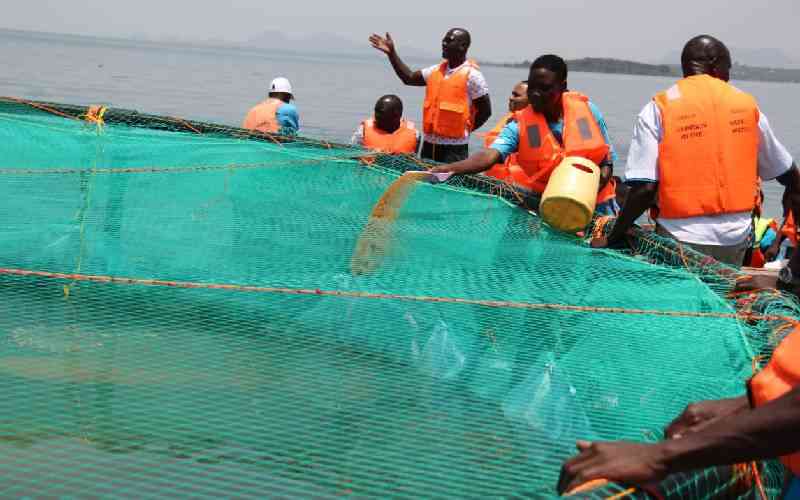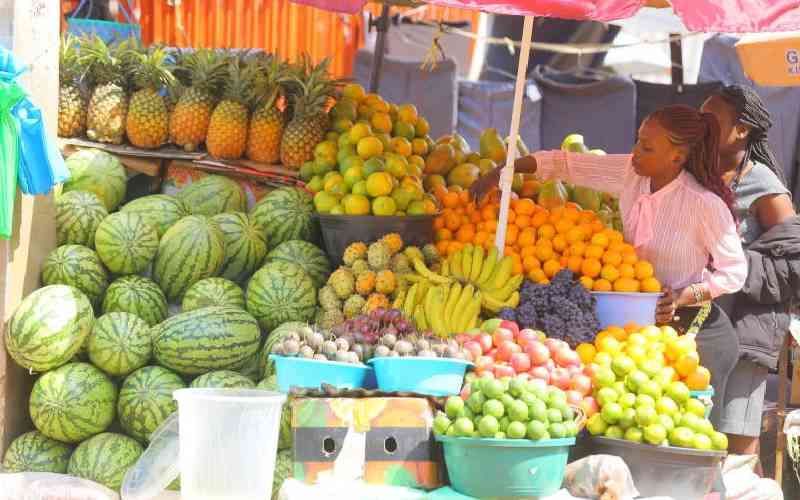
More than 1,000 fish cages in Lake Victoria have not been authorised, the State has revealed.
Kenya Fisheries officer Robert Wanyama said the owners of the more than 2,000 cages in the lake should seek permits from the Ministry of Fisheries and Agriculture and the National Environment Management Authority (Nema).
He cautioned that the permits are not issued by the county government.
"They should apply for a licence from us since we are the ones with the map of the lake. We know where water hyacinth settles, and the breeding sites for fish that should not be interfered with. The counties do not have the map," Mr Wanyama said.
He said a majority of the cages had been put up in areas that are not recommended for fish cage farming.
"This licensing is for their advantage... if they are serious with fish investment. We have a suitable map of investment where they will not have problems with winds too. Others have also been erecting the cages in routes for normal transport operations, which is wrong," he said.
So far, millions of shillings have been lost by fish farmers who installed their cages next to Lake Victoria water shores and on the water hyacinth pathways.
Wanyama said the fish farmers, who get approximately 3,000 metric tonnes of fish in eight months, should consult the ministry to avoid further losses.
Kenya Marine and Fisheries Research Institute (MFRI)'s assistant director for Freshwater Systems Research Christopher Aura said fish caging is a lucrative business that should be wisely invested in.
"More than 46 per cent of fish cages are located in the shallow waters. The shallow waters are fish breeding grounds, therefore, the cages interfere with normal fish breeding. The shallow waters are also susceptible to land use activities," said Dr Aura.
He said they have also ascertained that fish in the cages sometimes die due to the low oxygen levels in the water.
"Recently, we realised that the cages are located in areas without dissolved oxygen. Half of farmers use powdery foods that easily crumble. When not taken by fish, they end up adding to the fertilisation of the lake," he said.
When the lake becomes fertile, there is a high possibility of water hyacinth formation, which makes the fish cages inaccessible for the farmers to feed and harvest their fish in cages.
Another issue affecting fish farmers is death of their fish due to overstocking.
Stay informed. Subscribe to our newsletter
 The Standard Group Plc is a
multi-media organization with investments in media platforms spanning newspaper
print operations, television, radio broadcasting, digital and online services. The
Standard Group is recognized as a leading multi-media house in Kenya with a key
influence in matters of national and international interest.
The Standard Group Plc is a
multi-media organization with investments in media platforms spanning newspaper
print operations, television, radio broadcasting, digital and online services. The
Standard Group is recognized as a leading multi-media house in Kenya with a key
influence in matters of national and international interest.
 The Standard Group Plc is a
multi-media organization with investments in media platforms spanning newspaper
print operations, television, radio broadcasting, digital and online services. The
Standard Group is recognized as a leading multi-media house in Kenya with a key
influence in matters of national and international interest.
The Standard Group Plc is a
multi-media organization with investments in media platforms spanning newspaper
print operations, television, radio broadcasting, digital and online services. The
Standard Group is recognized as a leading multi-media house in Kenya with a key
influence in matters of national and international interest.









